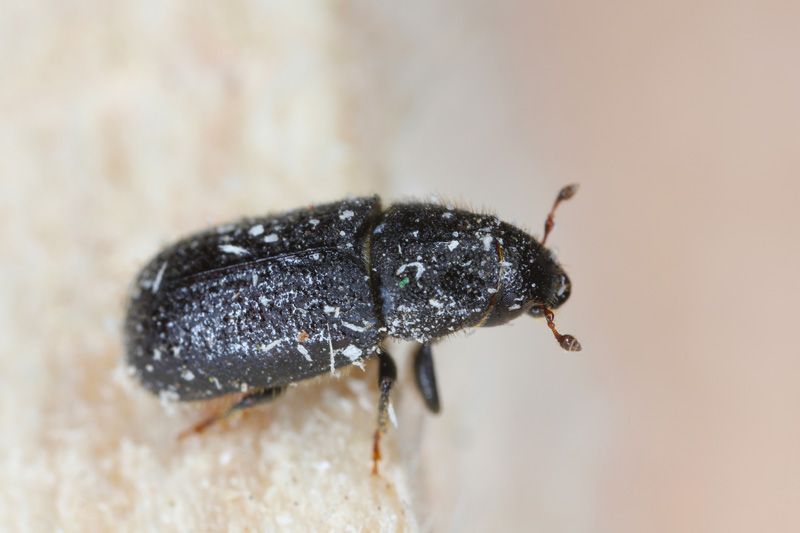
Pine Shoot Beetle – Tomicus piniperda
Pine Shoot Beetle – Tomicus piniperda
Description of Insect:
The pine shoot beetle (Tomicus piniperda) is a destructive bark beetle that primarily infests pine trees. Native to Europe, this beetle has become an invasive pest in North America, where it poses a serious threat to pine forests. Adults measure between 3.5 and 4.8 mm in length and have a cylindrical, dark brown to black body.
This species is known for its two-phase attack on pine trees. In early spring, adult beetles burrow into the bark of weakened or windblown pine trees to lay eggs. The larvae tunnel through the phloem and cambium, disrupting the tree’s ability to transport nutrients. In the summer, the new generation of adults migrates to healthy pine shoots, feeding on and hollowing out the soft wood. This stunts tree growth and reduces timber quality, lowering the economic value of pine trees.
Pine shoot beetles are highly adaptable and capable of infesting a wide variety of pine species. This includes Scots pine (Pinus sylvestris), red pine (Pinus resinosa), and eastern white pine (Pinus strobus). Their ability to spread quickly and infest both healthy and weakened trees makes them a serious concern for forest management and commercial timber production.
Life cycle of Pine Shoot Beetle
The life cycle of the pine shoot beetle consists of four stages: egg, larva, pupa, and adult. The reproductive cycle begins in late winter or early spring. Adult beetles emerge from their overwintering sites and seek out host trees for breeding. Once they find a suitable breeding site, such as the bark of stresses or fallen pine trees, females tunnel into the bark. They create 25 cm deep galleries between the inner bark and outer sapwood, where they lay eggs.
The eggs hatch into larvae, which begin feeding on the tree’s inner layers, forming intricate feeding tunnels beneath the bark. This phase lasts several weeks before the larvae enter the pupal stage. By late spring or early summer, pupation is complete, and new adults emerge.
These beetles then shift to feeding on healthy pine shoots, a behavior that gives them their name. They bore into the soft wood of new growth, causing the shoots to wilt, die, and eventually fall from the tree. Pine shoot beetles complete their life cycle from egg to adult in 3 months, producing one to two generations per year.
Damage they cause:
Pine shoot beetles are considered a significant pest in both natural forests and commercial pine plantations. Their feeding behavior weakens trees, reduces growth rates, and lowers the quality of timber.
- Ecological Impact: In natural pine forests, these beetles can be severely damaging to the ecosystem. By targeting young and mature pines, Tomicus piniperdadisrupts forest regeneration and reduces overall tree density. Infested trees are more susceptible to secondary pests and fungal infections, which can lead to widespread tree mortality. The loss of pine trees affects wildlife that relies on them for food and shelter, ultimately reducing biodiversity in affected areas.
- Economic Impact: The pine shoot beetle poses a significant threat to the timber industry. Infested trees experience stunted growth, producing lower-quality wood that is less valuable for the lumbar mill and pulpwood industries. The beetle’s presence also affects Christmas tree farms, as damaged trees become unsellable due to deformed and dying shoots.
